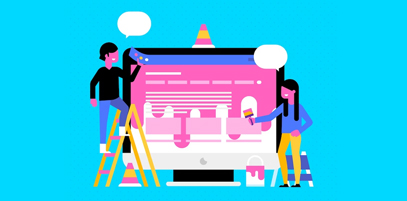Role of Animation and Micro-Interactions in User Experience
By :- Laura Davidson

In today's world, almost every brand wants to create a user-friendly interface for its customers. The main aim behind this is to increase customer base and revenue.
Now, when it comes to providing excellent user experience, animation and micro-interactions play a crucial role. They add depth and emotions for user engagement to digital interfaces.
What Are Micro-Interactions?
Micro-interactions are small events that focus only on one task. They make websites or apps look more attractive and user-friendly. Also, you can find animated micro-interactions all over your device and within the sites. Here are a few common examples:
- Register pop-ups
- Facebook like button
- Social shares
- Swipe left or right
- Tap effects, and many more.
Relation between animations and micro-interactions
Animations help improve micro-interactions that give the user the best experience with your website, product, or services. It adds realism to micro-interactions, making them feel more natural for your customers.
Moreover, animations like smooth transitions or fading effects on a particular button can make micro-interactions more attractive and impressive for users. This contributes to a better user experience. You can try animations in your testing sites and apps to make them more user-friendly.
Let's find out more about how animation and micro-interactions enhance user experience!
Communicating Feedback
Micro-interactions are a great way of communicating information while providing instant feedback to users. You can use amazing micro-interactions on your website or app to understand users' points of view about your services. Whether it's a progress indicator during a file upload or a simple button to like a product, these micro-interactions inform users about the system's response to their actions.
Smoother UI interactions
There are visual cues, such as animations or small prompts in micro-iterations, that guide you through the interface. Clear visual guidance helps you understand the functionality of the UI. Also, small animations, amazing sound effects, or visual transformations make the UI feel more interactive and enjoyable to use. This is one of the best UX design practices for smooth UI interactions will increase user satisfaction.
Increase User Engagement
Smooth movements, such as bouncing icons on page, can grab users' attention about your product or services. There are also some fun and addictive micro-interaction designs that can make users addicted to your website or app. For example, an animated loading spinner can make the waiting experience more engaging and less frustrating for users.
Forming Emotional Bonds
Micro-interactions can generate emotions, which makes the user experience more unique and memorable. The aspects of joy, personality, and surprise in micro-interactions create emotional bonds that encourage user engagement. In this way, people would love to spend time on your site and feel connected with your business.
Making Complex Tasks Simple for Users
Within a larger workflow, micro-interactions can make complex tasks easy for users by guiding them in a step-by-step manner. This can further reduce cognitive load and prevent overwhelming feelings to improve user experience. For instance, a button changing colour when hovered over indicates that it's clickable, reducing the cognitive effort required to figure out the UI.
Final Words
Animations and micro-interactions are very important to enhance user experience. This will also help your business to grow and increase potential users to your apps or website.
Recent Topics
-
 WordPress.com Launches 100-Year Web Hosting Plan
WordPress.com Launches 100-Year Web Hosting PlanWordPress, the platform that helps people create websites, now offers something rare. It has taken a bold leap into the future with its 100-year web hosting plan. ...
Read MoreBy :- Laura Davidson
-
 5 Best AI Web Design Tools You Can Try
5 Best AI Web Design Tools You Can TryWhy bother with all the effort of creating websites manually when we have amazing AI tools? In fact, using these tools has become one of the most-practiced ...
Read MoreBy :- Tiana K
-
 Role of Animation and Micro-Interactions in User Experience
Role of Animation and Micro-Interactions in User ExperienceIn today's world, almost every brand wants to create a user-friendly interface for its customers. The main aim behind this is to increase customer base and revenue. Now, when it comes...
Read MoreBy :- Laura Davidson
-
 Web Design Trends to Watch Out for in 2024
Web Design Trends to Watch Out for in 2024Web design is a constant-evolving technology landscape. As a web designer, staying tuned with web design trends and keeping your designs up-to-date is important. These trends will affect ...
Read MoreBy :- Esther McGuinness
-
 The Power of Storytelling in Web Design Engaging Users with a Narrative
The Power of Storytelling in Web Design Engaging Users with a NarrativeStories never fail to engage listeners. That’s why web designers are leveraging the art of storytelling in their designs. In web designing, storytelling goes beyond merely usin...
Read MoreBy :- Navkiran Dhaliwal
-
 WordPress Releases Version 6.3 ?“Lionel”
WordPress Releases Version 6.3 ?“Lionel”WordPress 6.3 “Lionel” is out! Now, you’ll be able to create more beautiful and compelling websi...
Read MoreBy :- Tiana K
